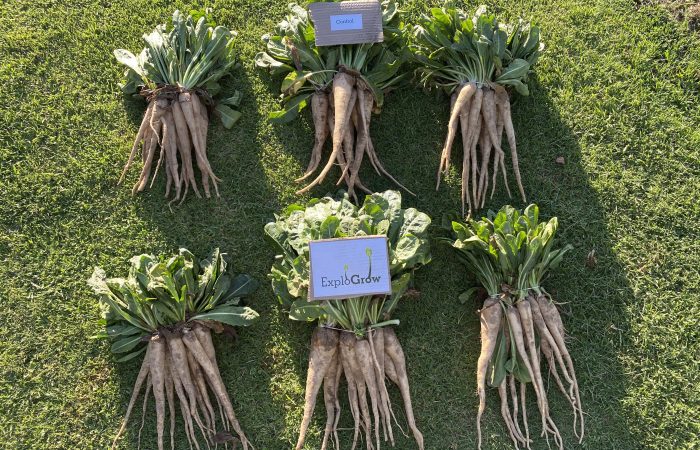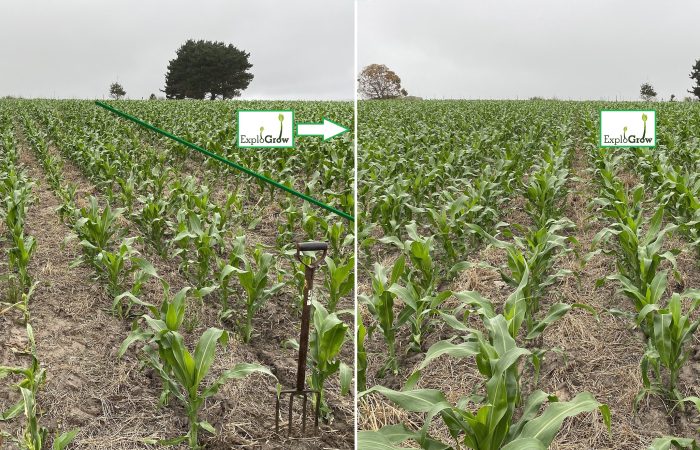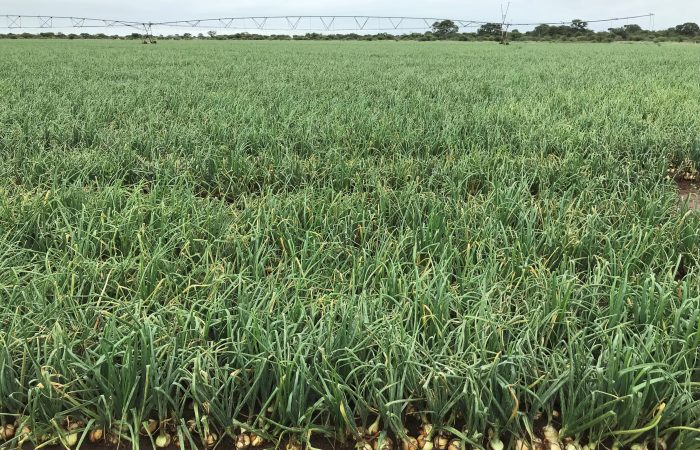How to grow Marijuana using ExploGrow™ organic biofertilizer together with other Cannabis nutrients and fertilizers
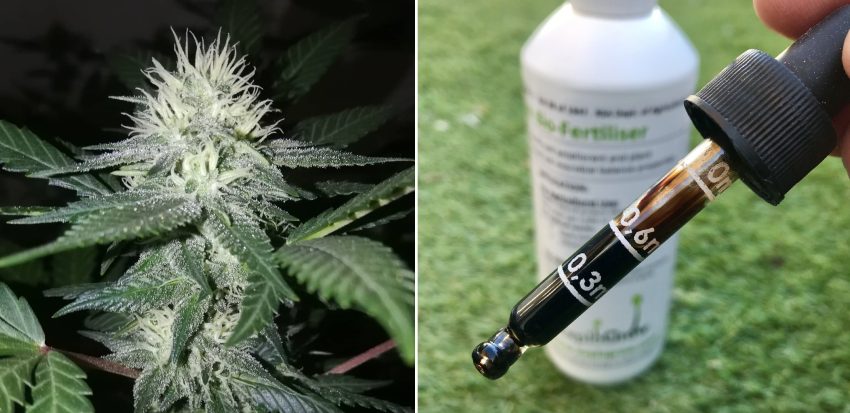
Photo credits: PapaJ and Jay420herb
"Thanks to PapaJ and ExploGrow™: Double everything from last run".Mal Pitte, Medical Marijuana Grower, South Africa (Instagram: Malpitte)
What is ExploGrow™ bio-organic fertilizer and why does the Cannabis plant respond well to this specific formula?
ExploGrow™ is a liquid bio-fertilizer with a custom polymicrobial blend of soil beneficial (17) microbes that has been certified as organic. The beneficial soil microbes symbiotically bond with the plants to improve nutrient uptake, improving the growth of the plants.
[Reference: 1]
"The unique microbial composition places ExploGrow™ in a league all of its own" by Dr S. Malherbe, BSc; BSc Hons.; MSc (Microbiology); Pr.Sci.Nat. (Agricultural Science); PhD (Agronomy).
Colony Forming Unit ("CFU") count per ml >5.7 x 109 (CFU count ml >5,700,000,000).
How do I apply ExploGrow™ bio-fertilizer?
UPDATED Cannabis SOP / grow guide PDF
Seed Treatment/Germination:
Bring seeds and ExploGrow™ biofertilizer to room temperature. Soak 1 seed in 0.1 - 1ml of ExploGrow™ for 30min for initial bio inoculation. After the initial bio inoculation place the 0.1 - 1ml seed soaking in 0.1 - 1ml of ExploGrow™ in 10 -50ml of dechlorinated or RO water for final soak overnight.
Sowing Seed:
In Soil create a 1 cm deep hole in the soil, place 1 soaked seed in the hole and gently compress edges into hole. In Hydroponics place 1 soaked seed in the hole only. Pour 1 - 2ml of ExploGrow™ diluted in 100ml of dechlorinated or RO over seed covered with soil.
Soil Weekly or Monthly
Weekly: Dilute 0.2 - 1ml of ExploGrow™ in 100ml of dechlorinated or RO water and pour near the base of the plant. Monthly: Dilute 1 - 5ml of ExploGrow™ in 100 - 500ml of dechlorinated or RO water and pour near the base of the plant.
Weekly applications are optimal, nevertheless, 1 ml applied every month will also be effective.
Hydroponics Weekly:
Apply 4ml of ExploGrow™ per liter of dechlorinated or RO water with the refilling of the reservoir tank adding ExploGrow™ once per week.
Note: Reservoir tank water must be aerated 24/7 to prevent slime build up.
Can I apply ExploGrow™ bio-fertilizer as a foliar feed on my Cannabis plants?
Foliar Weekly:
Foliar feed plants by spraying a fine mist containing 1 - 2ml of ExploGrow™ per liter of dechlorinated or RO water once per week up until flowering. Allow for enough flush time before harvesting.
Any tips for growing in an in-door / out-door competition (should I just max all my nutrients and then add a double dose of ExploGrow™)?
ExploGrow™ improves nutrient uptake, so maxing/overdosing nutrients could have a negative influence on the plant’s growth. We always recommend reducing fertilizers when using ExploGrow™ (more details below).
What about double dosing ExploGrow? We recommend trialling different programs in order to determine the best one.
When can I start applying ExploGrow™ bio-fertilizer?
You can start applying ExploGrow™ bio-fertilizer at seedling stage up until the start of flowering stage.
How much should I reduce fertilizer/nutrients by if I apply ExploGrow™ bio-fertilizer to Cannabis?
We recommend reducing fertilizer (and all Cannabis nutrients) by 25-50%.
Microbes have a profound effect on transformation of Nitrogen from the atmosphere into the soil. However, Nitrogen is not the only element microbes can effectively fix into the soil. Microbes can solubilize Phosphorous and Iron among other elements. They also play a very important role in decomposition of organic matter, enhancing enzyme synthesis and production of hormones within plants.
[References: 2, 3-8, 9, 10-12]
What is the best Marijuana fertilizer/nutrient/ExploGrow™ program?
- We recommend trials with multiple replicates (x 3 for example)
- Grow the same Marijuana strain, using seeds from the same source/supplier
- Plant 2 treatments and 1 control
15 samples in total:
- 5 x Control: 100% fertilizer (use your best Marijuana fertilizer/nutrient program)
- 5 x Treatment 1: 50% of normal Marijuana fertilizer/nutrient program + ExploGrow™ bio-fertilizer
- 5 x Treatment 2: 75% of normal Marijuana fertilizer/nutrient program + ExploGrow™ bio-fertilizer
Repeat this process (keeping the best performing nutrient program) and tweak with small adjustments.
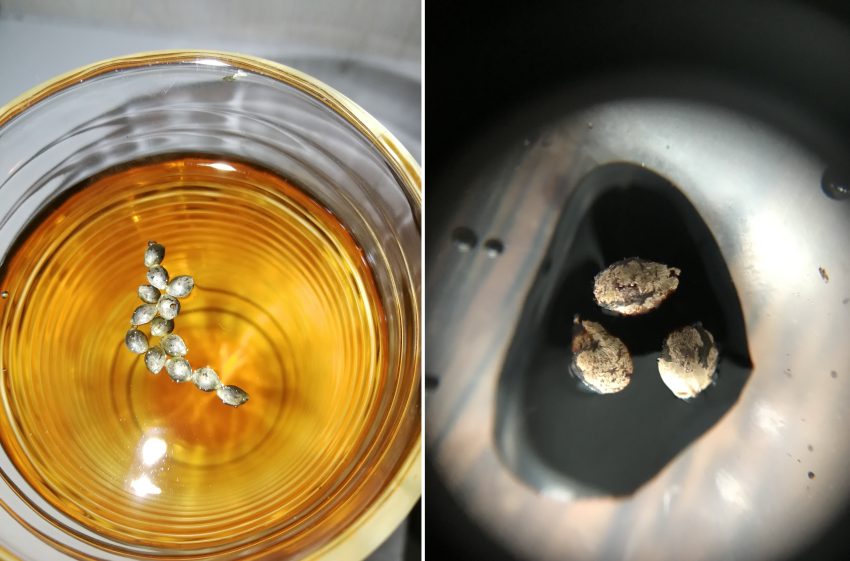
Photo credits: PapaJ and Jay420herb
How to improve seed germination with microbial seed treatments
(Click the link to open detailed guidelines for: general agriculture and high value plant seed treatments)
What is seed soaking?
Seed soaking in water increases the rate and success of germination. Do not soak seed too long or in hot water as this will cause the seed to decompose and decrease germination success.
Undiluted seed soak:
How to soak your Marijuana seeds using undiluted ExploGrow™ organic microbes
- bring seeds to room temperature
- soak seeds in 1-2ml ExploGrow™ organic microbes for 20-30 min max.
- move the seeds (with the microbes from the seed soak) to a class of dechlorinated water for 12 hours at 22°C - 26°C
How to assist seed germination:
After soaking the seeds, use the seed soak liquid (water with microbes) to wet a paper towel, wet but not dripping wet, placed on a clean plate. Fold closed and keep the temperature between 22°C - 26°C.
How long before the seeds germinate?
Most seeds should have sprouted within 12 hours - 72 hours
Planting the germinated seed:
Gently move the sprouted seeds into a pre-prepared pot or solo cup with the tap root facing down.
Can I use other microbial products like Efficient Microbes EM1?
EM1 contains Lactic Acid Bacteria, CFU count per ml 6.8 x 107(68,000,000) and Yeast, CFU count per ml2.4 x 102 (240).
ExploGrow™ biofertilizer contains 17 microbes (CFU count ml >5,700,000,000), including Lactobacillus.
Using other microbial products in combination with ExploGrow™ may or may not have a negative effect on the soil environment. Combining products should be done on a trial basis in order to determine the effect.
Should I feed/brew ExploGrow™ microbes?
Due to the carefully designed formulation of our microbial blend, we strongly recommend that growers do not brew/feed ExploGrow™ microbes.
Should ExploGrow™ be agitated before applications?
Yes. Shake the concentrate well (for 30 seconds) before dilution and mixing thoroughly (with dechlorinated water) before and during applications.
When co-applying ExploGrow™ (NOT required) together with molasses, seaweed extract, humic acid, fulvic acid, amino acids, fish emulsion etc., let the diluted mix stand for 3 - 4 hours, but never more than 6 hours.
Why should I reduce my normal Marijuana fertilizer/nutrient program (molasses, seaweed extract, humic acid, fulvic acid, amino acids, fish emulsion etc.)?
ExploGrow™ microbes improve the nutrient absorption of plants. We recommend reducing the use of any fertilizer (by 25-50%) as this can lead to over fertilization or inefficient and wasteful use of nutrients.
[References: 2, 3-8, 9, 10-12]
Why should I use organic soil amendments like compost and coco peat?
ExploGrow™ biofertilizer contain microbes that decompose organic material into readily available nutrients for plants to uptake. Organic soil amendments like compost and coco peat can be broken down over time supplying the plants with beneficial nutrients.
Bacillus plays a major role in nutrient cycling by breaking up organic matter in the soil. This organic matter often has several different nutrients including Potassium. By processing this organic matter and reducing it into simpler nutrients, those nutrients become readily available to the plants root systems.
[References: 9]
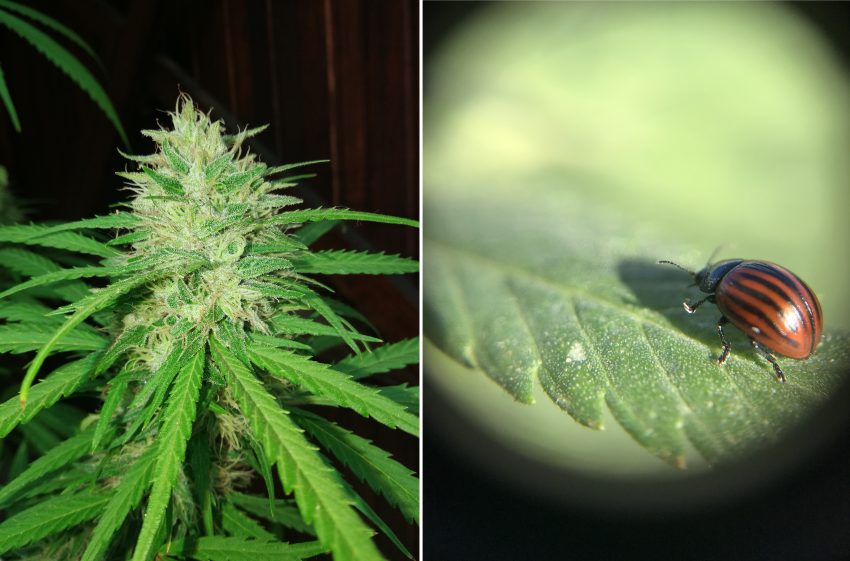
Photo credits: PapaJ and Jay420herb
What if I have an outbreak of bugs like thrips, hemp flea beetles, hemp borers, spider lice etc.?
We recommend using organic management techniques for pest control as any poisons/pesticides can negatively affect ExploGrow™ microbes.
Will the presence of the ExploGrow™ microbes help against common Cannabis pests and diseases?
ExploGrow™ does not claimed to be a remedy per se against specific plant pests, diseases, pathogens, harmful fungi etc.
ExploGrow™ will only report beneficial microbial functions that have been scientifically proven and/or that formed part of our submission for product approval under DAFF's Fertiliser Act 36 of 1974.
It may be self-evident that when introducing a diverse blend of valuable microbes into the soil, that this will result in much healthier soil biology and much healthier plants. However, it will be impossible to measure the full scope of its valuable effect.
More information on the efficient functions of our microbes can be found here: Bio-control and plant health functions.
Do UV lights kill all microbes?
In theory UV lights kill bacteria, however ExploGrow™ microbes are underneath the soil surface where UV lighting won’t negatively affect the microbes.
Will ExploGrow™ increase my CBD and THC?
There isn’t enough scientific information on this topic yet.
Additional links:
UPDATED Cannabis SOP / grow guide PDF
17 beneficial microbes and some of their potent plant and soil functions
Some known Bio-control functions performed by 7 beneficial microbes
Frequently Asked Questions (Agricultural FAQ)
Why it is possible to reduce N-P-K fertilizers by using beneficial soil microbes?
Material Safety Data Sheet (MSDS)
Click here to open the PDF: ExploGrow™ MATERIAL SAFETY DATA SHEET (MSDS) PDF
Photo credits links: PapaJ420Shop and Jay420herb
Recommended Resources
Bond, L. (2017) How To Grow Weed For Total Beginners. sbBooks. ISBN: 9781537860824
Chisk, S. (2018) How To Grow & Cultivate Marijuana The Indoor & Outdoor Guide To Marijuana Horticulture. HSE Games. ISBN: 9788829570102
Green, A. (2017) Growing Marijuana For Beginners. HMPL Publishing. ISBN: 9492788020
Green, G. (2009) The Cannabis Grow Bible. Green Candy Press. ISBN: 9781931160841
Hydroponic A Practical Guide To Turbocharge Your Hydroponic Garden With Focus On New Technique & System. Gardenfluencer Tech. Pg 143. ISBN: 9781097318032
Rice, D. H. (2011) How Plants Grow. Teacher Created Materials Inc. ISBN: 1433335778
Southern, N. (2017) How Not To Kill Your Plants. Hodder & Stoughton. ISBN: 1473651123
REFERENCES:
1. Organic certification (link)
2. Andrew, J.W., D. Jonathan, R. Andrew, S. Lei, N.N. Katsaridou, S. Mikhail and A.D. Rodionov, 2007. Living without Fur: the subtlety and complexity of iron-responsive gene regulation in the symbiotic bacterium Rhizobium and other a-proteobacteria. Biometals, 20: 501-511.
3. Doroshenko, E.V., E.S. Boulygina, E.M. Spiridonova, T.P. Tourova and I.K. Kravchenko, 2007. Isolation and characterization of nitrogen-fixing bacteria of the genus Azospirillum from the Soil of a Sphagnum Peat Bog. Microbiol., 76: 93-101.
4. Egamberdieva, D & Z Kucharova, 2008 Cropping effects on microbial population and nitrogenase activity in saline arid soil. Turk. J. Biol., 32: 85-90
5. Emtiazi, G., M. Pooyan and M. Shamalnasab, 2007. Cellulase Activities in Nitrogen Fixing Paenibacillus Isolated from Soil in N-free Media. World Journal of Agricultural Sci., 3: 602-608.
6. Frank, I.B., P. Lundgren and P. Falkowski, 2003. Nitrogen fixation and photosynthetic oxygen evolution in cyanobacteria. Research in Microbiol., 154: 157-164.
7. Gonzalez, L.J., B. Rodelas, C. Pozo, V. Salmeron, M.V. Mart nez and V. Salmeron, 2005. Liberation of amino acids by heterotrophic nitrogen fixing bacteria. Amino Acids, 28: 363-367.
8. Hyoung, S.L., M. Munusamy, C.W. Kim, S. Choi, K.Y. Chung and M.S. Tong, 2006. Physiological enhancement of early growth of rice seedlings (Oryza sativa L.) by production of phytohormone of N2-fixing methylotrophic isolates. Biol Fertil Soils, 42: 402-408.
9. Peter, V.M., K. Cassman, C. Cleveland, T. Crews, B.F. Christopher, B.N. Grimm, W.R. Howarth, R. Marinov, L. Martinelli, B. Rastetter and I.J. Sprent, 2002. Towards an ecological understanding of biological nitrogen fixation. Biogeochemistry, 57: 1-45.
10. Requena, N., T.M. Baca and R. Azcdn, 1997. Evolution of humic substances from unripe compost during incubation with lignolytic or cellulolytic microorganisms and effects on the lettuce growth promotion mediated by Azotobacter chroococcum. Biol Fertil Soils, 24: 59-65.
11. Simon, T., 2003. Utilization of biological nitrogen fixation for soil evaluation. Plant Soil Environ., 49: 359-363.
12. Timothy, C.E., 1999. The presence of nitrogen fixing legumes in terrestrial communities: Evolutionary vs ecological considerations. Biogeochemistry, 46: 233-246.

